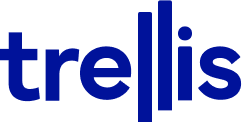Why the Fundamentals Matter (More Than Ever)
Let’s talk prompting. We’ve all heard the sermons: write a clear prompt, refine it, engineer it, sprinkle some magic dust. Maybe use a tool like Prompt Genie. Cool. Cool. We got it.
But every time I’m crafting or reviewing a prompt, I’m instantly back to my early days as an account manager at an ad agency.
If you haven’t lived that life: the account person is the human bridge. You manage the client relationship, keep the work on track, make sure the creative actually moves the needle, and—minor tasks—keep everyone reasonably happy. (Creatives, I love you. Truly. Even when the feedback is “Can we make the logo bigger?”)
It’s a tough role. You juggle ambitious timelines, scope creep, and the occasional Frankenstein request: “Let’s take a little of concept A and mash in concept B.” As hard as it was, it turned out to be a fantastic bootcamp for product marketing.
Why? Because it forces you to live in both hemispheres of your brain. Cross-functional collaboration, ruthless prioritization, timeline triage (project managers, you are saints), and a laser focus on what resonates with the audience.
And at the center of it all: the creative brief.
A great brief is everything. It can be the difference between work that sings and work that just… exists. Or to put another way…..
Crap in = crap out. (Technical term. 😉)
Clients hand over a brief, but it’s the account manager’s job to fill the gaps—market context, customer truths, business needs, brand needs —and translate it into something the creative team can use. That exact skillset maps beautifully to product marketing: we get a product requirements doc, then we enrich it with competitive intel, customer research, and insights from sales and success. Spin the plates, shape the story, drive the impact.
So… what does this have to do with AI?
Everything.
Prompts are just modern briefs. The same fundamentals apply.
Crap in = crap out. Again.
The clearer the ask, the better the output. What are we making? For whom? Why now? What’s the tone? What constraints matter? How will we know it worked?
AI can make you faster. It cannot replace judgment. It can’t tell you if the campaign actually moved the metric that matters. That comes from living the work—shipping, learning, adjusting.
If you need proof, open LinkedIn and behold the tidal wave of low-context, low-impact content. Tools aren’t the villain. Weak briefs are.
I like this framing: Knowledge comes from learning. Wisdom comes from doing.
In this context, “doing” means writing real briefs, testing, reading the output with a critical eye, and refining. Then doing it again.
A Tiny Prompting-As-Brief Checklist
So before you hit “Generate,” think about the fundamentals. Pause, reflect and consider the:
Objective: What outcome do I want? (Be specific.)
Audience: Who is this for and what do they care about?
Inputs: Must-include facts, data, voice of customer, constraints.
Tone & Format: Friendly? Expert? 500 words? Bullets? CTA?
Guardrails: What to avoid. brand no-nos, compliance notes.
Success Criteria: How will I judge a “good” output?
Start there, and your prompts will stop being fishing expeditions and start being creative direction.
If you want a marketing partner who’s lived both sides—agency and product marketing—Trellis can help you level up the fundamentals: sharper briefs, smarter prompts, and work that actually moves the business. Warm coaching, a little humor, and a lot of wisdom included.
